- Home
- Peter F. Hamilton
The Abyss Beyond Dreams Page 2
The Abyss Beyond Dreams Read online
Page 2
‘How’s that happening?’ she grunted, frowning. Her u-shadow confirmed that her gaiamotes were inactive. Nobody could connect directly to her neural strata. And yet . . .
Torak, the Vermillion’s chief xenobiology officer, gave her a lopsided grin. ‘If you think that’s weird, how about this?’ A tall plastic mug of tea floated through the air towards him, trailing wisps of steam. Torak stared at it in concentration, holding out his hand. The mug sailed into his palm, and he closed his fingers round it with a smug grin.
Laura gave the bridge ceiling a puzzled look, her ever-practical mind immediately reviewing the parameters of ingrav field projector systems. Theoretically it would be possible to manipulate the ship’s gravity field to move objects around like that, but it would be a ridiculous amount of effort and machinery for a simple conjuring trick. ‘What kind of gravity manipulation was that?’
‘It’s not.’ Torak’s lips hadn’t moved. Yet the voice was clear in her head, along with enough emotional overspill to confirm it was him ‘speaking’.
‘How did you . . .?’
‘I can show you what we’ve learned, if you’ll let me,’ Torak said.
She gave him an apprehensive nod. Then something like a memory was bubbling up into her mind like a cold fizzy liquid, a memory that wasn’t hers. So similar to a gaiafield emission, but at the same time definitely not. She had no control over it, no way of regulating the images and voices. That scared her.
Then the knowledge was rippling out inside her brain, settling down, becoming instinct.
‘Telepathy?’ she squeaked as she knew. And at the same time, she could sense her thoughts broadcasting the astonished question across the bridge. Several of the crew flinched at the strength of it impinging on their own thoughts.
‘In the purest sense,’ Torak responded. ‘And telekinesis, too.’ He let go of the tea mug, which hung in mid-air.
Laura stared at it in a kind of numb fascination. In her head, new insights showed her how to perform the fantasy ability. She shaped her thoughts just so, reaching for the mug. Somehow feeling it; the weight impinged on her consciousness.
Torak released his hold on it, and the mug wobbled about, dropping ten centimetres. Laura reinforced her mental grip on the physical object, and it continued to hang in mid-air. She gave a twitchy laugh before carefully lowering it to the floor. ‘That is some serious bollocks,’ she murmured.
‘We have ESP, too,’ Torak said. ‘You might want to close your thoughts up. They’re kind of . . . available.’
Laura gave him a startled glance, then blushed as she hurriedly tried to apply the knowledge of how to shield her thoughts – intimate, painfully private thoughts – from the scrutiny of everyone on the bridge. ‘All right; enough. Will someone please tell me what the hell is going on? How are we doing this? What’s happened?’
Captain Cornelius Brandt stood up. He wasn’t a particularly tall man, and worry made him appear stooped. Laura could tell just how worn down and anxious he was; despite his efforts to keep his thoughts opaque and calm, alarm was leaking out of him like ethereal pheromones. ‘We believe we’re in the Void,’ he said.
‘That’s impossible,’ Laura said automatically. The Void was the core of the galaxy. Up until 2560, when the Endeavour, a ship from the Commonwealth Navy Exploration fleet, completed the first circumnavigation of the galaxy, astronomers had assumed it was the same kind of supermassive black hole that most galaxies had at their centre. It was massive. And it did have an event horizon, just like an ordinary black hole. But this one was different. It wasn’t natural.
As the Endeavour soon learned, the Raiel – an alien race more technologically advanced than the Commonwealth – had been guarding the boundary for over a million years. In fact, they’d declared war on the Void. From the moment their first crude starships encountered it, they’d carefully observed the event horizon undergoing unnatural expansion phases. Incredibly for anything that large on a cosmological scale, it appeared to be an artefact. Purpose unknown. But, given the severity and unpredictability of its expansion phases, it would eventually inflate out to consume the entire galaxy long before any natural black hole would have done.
So the Raiel invaded. Thousands upon thousands of the greatest warships ever built tore open the Void’s boundary and streaked inside.
None returned. The entire armada had no apparent effect on the Void or its atypical, inexorable expansion. That was a million years ago. They’d been guarding the boundary ever since.
Wilson Kime, who captained the Endeavour, was politely but firmly ordered to turn back and fly outside the Wall stars which formed a thick band around the Void. After that, the Raiel invited the Commonwealth to join the multi-species science mission that kept a constant watch on the Void. It was a mission which had lasted since the Raiel armada invaded, and in those million years had added precisely nothing to the knowledge of what lurked on the other side of the event horizon boundary.
‘Improbable,’ Cornelius corrected. ‘Not impossible.’
‘Well, how did we get inside? I thought our course took us around the Wall stars.’
‘Closest approach to the Wall was three thousand lightyears,’ Cornelius said. ‘That’s when we fell inside. Or jumped. Or got snatched. We’re still not sure how. Presumably some kind of teleport connection opened up inside hyperspace. It would take a phenomenally advanced technology to create that; but then, as we’ve all suddenly been granted superhuman powers, quantum hyperfield theory is the least of our problems.’
Laura gave him an incredulous stare. ‘But why?’
‘Not sure. The only clue we have is Tiger Brandt. Just before we were brought in, she said she experienced some kind of mental contact, like a dream reaching through the gaiafield, but a lot fainter. Something sensed us or her. Then, next we know . . . we were inside.’
‘Tiger Brandt?’ Laura asked. She knew all about Tiger, who was married to Rahka Brandt, the captain of the Ventura. ‘Wait – you mean the Ventura is in here with us?’
‘All seven ships were pulled in,’ Cornelius said gloomily.
Laura looked at the tea mug again, ignoring all her tank yank discomforts. ‘And this is the inside of the Void?’ she asked incredulously.
‘Yes. As far as we understand, it’s some kind of micro-universe with a very different quantum structure to spacetime outside. Thought can interact with reality at some fundamental level, which is why we’ve suddenly acquired all these mental powers.’
‘By the action of watching, the observer affects the reality of that which is watched,’ she whispered.
Cornelius raised an eyebrow. ‘Neatly understated.’
‘So how do we get out?’
‘Good question.’ Cornelius indicated one of the large holographic images behind him. It showed her space with very few stars and a number of exotic and beautifully delicate nebulas. ‘We can’t see an end to it. The inside of the Void seems to be some kind of multidimensional Möbius strip. In here, the boundary doesn’t exist.’
‘So, where are we going?’
Cornelius’s mind emitted a sensation of desperation and despair that made Laura shiver again. ‘The Skylord is taking us to what it claims is an H-congruous planet. Sensors are confirming that status now.’
‘The what?’
Cornelius gestured. ‘Skylord.’
With a stiff back, Laura turned round. The high-res image behind her was taken from a sensor mounted on the forward section of the starship, where the ultradrive unit and force-field generators were clustered. The bottom fifth of the image showed the curving carbotanium hull with its thick layer of grubby grey thermal foam. At the top of the hologram was a small blue-white crescent, similar to any of the H-congruous worlds in the Commonwealth – though its night side lacked any city lights. And between the hull and the planet was the strangest nebula Laura could have imagined. As she stared, she saw it had some kind of solid core, a long ovoid shape. It wasn’t truly solid, she realized, but actually
comprised of sheets of some crystalline substance warped into an extraordinary Calabi-Yau manifold geometry. The shimmering surfaces were alive with weird multicoloured patterns that flowed like liquid – or maybe it was the structure itself that was unstable. She couldn’t tell, for flowing around it was some kind of haze, also moving in strange confluences. ‘Serious bollocks,’ she grunted.
‘It’s a kind of spaceborne life,’ Cornelius said. ‘Three of them rendezvoused with us not long after we were pulled into the Void. They’re sentient. You can use your telepathy to converse with them, though it’s like talking to a savant. Their thought processes aren’t quite like ours. But they can fly through this space. Or at least manipulate it somehow. They offered to lead us to worlds inside the Void where we could live. Ventura, Vanguard, Violet and Valley followed two Skylords. Vermillion is following this one, along with Viscount and Verdant. We decided that splitting the starships gives us a better chance of finding a viable H-congruous planet.’
‘With respect,’ Laura said, ‘why are we following any of them to a planet at all? Surely we should be doing everything we can to find the way out? All of us are on board for one reason: to found a new civilization outside this galaxy. Granted, the inside of the Void is utterly fascinating, and the Raiel would give their right bollock to be here, but you cannot make that decision for us.’
Cornelius’s expression was weary. ‘We’re trying to find an H-congruous planet, because the alternative is death. Have you noticed your biononic function?’
‘Yes. It’s very poor.’
‘Same for any chunk of technology on board. What passes for spacetime in here is corroding our systems a percentage point at a time. The first thing to fail was the ultradrive, presumably because it’s the most sophisticated system on board. But for the last year there have been fluctuations in the direct-mass converters, which were growing more severe. I couldn’t risk leaving them on line. We’re using fusion reactors to power the ingrav drive units now.’
‘What?’ she asked in shock. ‘You mean we’ve been travelling slower than light all this time?’
‘Point nine lightspeed since we arrived, nearly six years ago now,’ Cornelius confirmed bitterly. ‘Thankfully the suspension chambers have remained functional, or we would have had a real disaster on our hands.’
Laura’s first reaction was, Why didn’t you get me out of suspension back then? I could have helped. But that was probably what everyone on board would think. And from what she understood of their situation, the captain had done pretty well under the circumstances. Besides, her specialist field of molecular physics probably wouldn’t be that helpful in analysing a different space-time structure.
She was drawn to the bright crescent ahead. ‘Is it H-congruous?’
‘We think so, yes.’
‘Is that why you tank yanked me? To help with a survey?’
‘No. We’re six million kilometres out and decelerating hard. We’ll reach orbit in another two days. Heaven alone knows how we’ll cope with landing, but we’ll tackle that when it happens. No, you’re here because our sensors found something at the planet’s Lagrange One point.’ Cornelius closed his eyes, and the image shifted, focusing on the Lagrange point one and a half million kilometres above the planet’s sunlit hemisphere, where the star’s gravitational pull was perfectly countered by the planet’s gravity. The area was filled with a fuzzy blob that either the sensors or Laura’s eyes couldn’t quite focus on. It seemed to be speckled, as if it was made up from thousands of tiny motes.
‘What is that?’ she asked.
‘We’re calling it the Forest,’ Cornelius said. ‘It’s a cluster of objects that are about eleven kilometres long, with a surface distortion similar to our Skylord friend.’
‘More of them?’
‘Not quite; the shape is wrong. These things are slim with bulbous ends. And there’s something else. The whole Lagrange point is emitting a different quantum signature to the rest of the Void.’
‘Another quantum environment?’ she asked sceptically.
‘So it would seem.’
‘How is that possible?’ Laura’s shoulders slumped as she suddenly realized why she’d been tank yanked – her and the other science staff sitting in the bridge. ‘You want us to go and find out what it is, don’t you?’
Cornelius nodded. ‘I cannot justify stopping the Vermillion in a possibly hostile environment to conduct a scientific examination. My priority has to be getting us down intact on an H-congruous world. So you’ll command a small science team. Take a shuttle over to the Forest and run whatever tests you can. It might help us, or it might not. But, frankly, anything which can add to our knowledge base has to be considered useful at this stage.’
‘Yeah,’ she said in resignation. ‘I can see that.’
‘Take Shuttle Fourteen,’ he said.
Laura could sense that the shuttle had some kind of significance to him. It was the sensation of expectation running through his thoughts which signalled it, but her brain still wasn’t up to working out why. She told her u-shadow to pull the file from her storage lacuna. Data on the shuttle played through her mind, and she still didn’t get it . . . ‘Why that one?’
‘It has wings,’ Cornelius said softly. ‘If you have a major systems glitch, you can still aerobrake and glide down to the surface.’
Then she got it. ‘Oh, right; the shuttle doesn’t need its ingrav units to land.’
‘No. The shuttle doesn’t.’
Laura’s blood seemed to be chilling back down to suspension levels again. The Vermillion, over a kilometre long, and not remotely aerodynamic, was utterly dependent on regrav to slow to zero velocity relative to the planet and ingrav to drift down to a light-as-a-feather landing. Of course there were multiple redundancies built in, and no moving parts, making failure just about inconceivable. In the normal universe.
‘Once we’ve confirmed H-congruous status, I’ll be launching all twenty-three shuttles from orbit,’ Cornelius said. ‘As will the Viscount and Verdant.’
Laura told her u-shadow to recentre the bridge display on the planet. It still couldn’t interface with the starship’s net. ‘Uh, sir, how did you load your orders into the command core?’
‘Gaiafield. The confluence nest is one system that hasn’t been affected by the Void.’
And the confluence nest which generated the local gaiafield was hardwired into the ship’s network, Laura realized. Funny what worked and what didn’t in the Void.
*
Laura thought the Vermillion’s excursion-prep facility looked identical to the bridge; the only difference was the blue-grey carpet, which was noticeably lighter – a difference due to six years of coffee stains, she assumed. Amazingly for a project to build trans-galactic colony ships there must have been some kind of budgetary issue, either with time or design aesthetics. When it came to compartments in the Vermillion’s command section, someone just pressed the duplicate button.
Including Laura, there were five people in Shuttle Fourteen’s crew. As a gathering, they resembled a bunch of sheepish friends getting together the morning after a particularly wild party, with everyone looking like crap, staring doubtfully into their mugs of herbal tea and nibbling plain biscuits.
Laura sat next to Ibu – a professor of gravatonics who was nearly twice her size, with most of his bulk made of muscle. Suspension hadn’t done him any favours. Flesh sagged, making it look as if he’d deflated somehow, and his normally bronzed skin was a paler grey than Laura’s. He regarded his body’s condition mournfully. ‘Biononics failure has got to be the worst part of this,’ he confided. ‘It’s going to take an age to get back in shape.’
‘I wonder how the Void continuum can tell the difference between natural organelles and biononics,’ Laura said. ‘They’re both fundamentally the same.’
‘Biononics are not sequenced into our DNA,’ Ayanna, the quantum field physicist mused. ‘Not natural. Somehow it must be able to distinguish between them.’
<
br /> ‘Discriminate, more like,’ Joey Stein, their hyperspace theorist, said. His inflated cheeks were constantly twitching, which Laura suspected came from complications with the tank yank. ‘Our microcellular clusters are all functioning away merrily. Yet they’re not a natural part of the human genome.’
‘They’re part of us now,’ Ayanna said. She was combing out her long chestnut hair, wincing as she tugged at various tangles.
‘The Void responds to thoughts,’ Laura said. ‘Has anyone simply thought that the biononics work?’
‘That’s not thinking, that’s praying,’ Ibu said.
Rojas, the shuttle pilot, sat down next to Joey. Captain Cornelius had brought him out of suspension a month ago to help plan the Vermillion’s landing. With his healthy Nordic-white skin and firm jaw showing five o’clock stubble, Laura thought he was the only one of them that didn’t look like a third-rate zombie right now.
‘Thinking systems into functionality has been tried,’ Rojas said sympathetically. ‘The awake crew have spent years attempting to mentally affect onboard equipment. Complete waste of time: the Void doesn’t work like that. Turns out, you can’t wish our machinery to activate.’
‘The Void has an agenda?’ Ayanna asked incredulously. ‘You’re talking as if it was alive, or at least aware.’
‘Who knows?’ Rojas said dismissively. He nodded at one of the big wall panels, which was showing an image of the Forest. ‘This is our assignment, so let’s focus on that, please.’
Ibu shook his head bullishly. ‘All right, then. What do we know?’
‘The Forest is a slightly ovoid cluster of individual objects we’re calling distortion trees, measuring approximately seventeen thousand kilometres down its axis, with a maximum diameter of fifteen thousand. Given the average tree size of nine kilometres and the distribution we’ve mapped, we’re estimating between twenty-five to thirty thousand of them in total.’
‘Are they all identical?’ Laura asked.

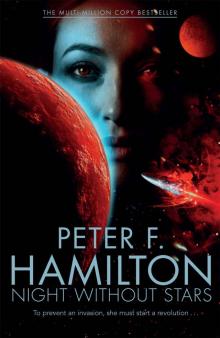 A Night Without Stars
A Night Without Stars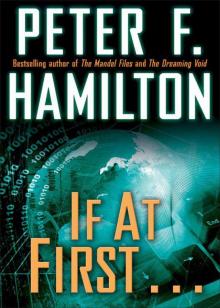 If at First . . .
If at First . . . The Neutronium Alchemist
The Neutronium Alchemist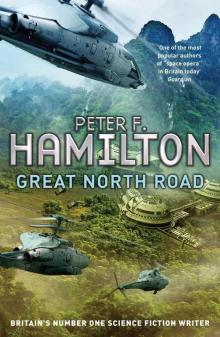 Great North Road
Great North Road Misspent Youth
Misspent Youth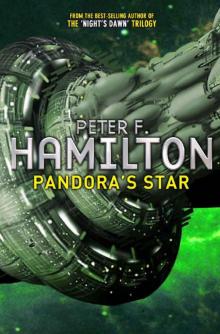 Pandora's Star
Pandora's Star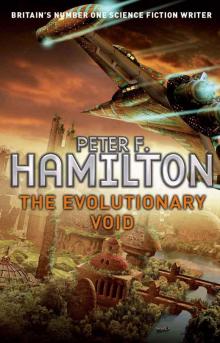 The Evolutionary Void
The Evolutionary Void The Dreaming Void
The Dreaming Void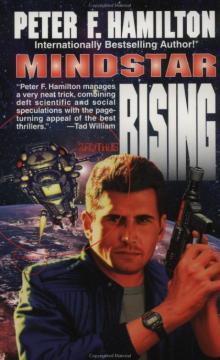 Mindstar Rising
Mindstar Rising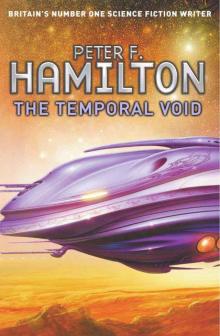 The Temporal Void
The Temporal Void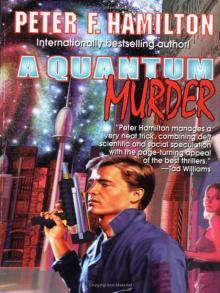 A Quantum Murder
A Quantum Murder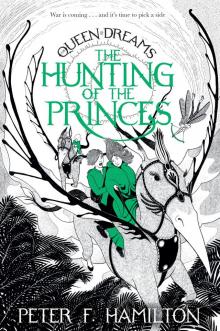 The Hunting of the Princes
The Hunting of the Princes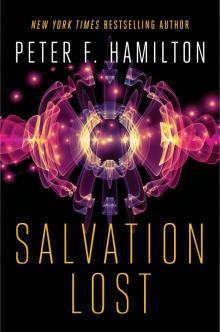 Salvation Lost
Salvation Lost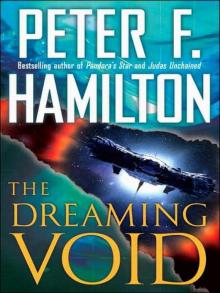 The Dreaming
The Dreaming Salvation
Salvation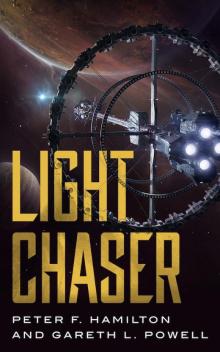 Light Chaser
Light Chaser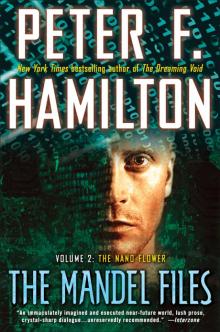 The Mandel Files, Volume 2: The Nano Flower
The Mandel Files, Volume 2: The Nano Flower![The Saints of Salvation [British Ed.] Read online](http://i1.bookreadfree.com/22/the_saints_of_salvation_british_ed__preview.jpg) The Saints of Salvation [British Ed.]
The Saints of Salvation [British Ed.]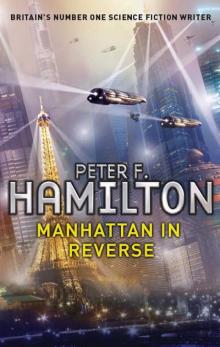 Manhattan in Reverse
Manhattan in Reverse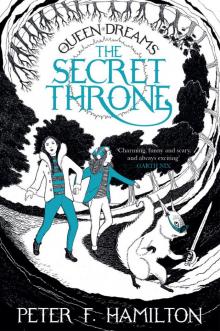 The Secret Throne
The Secret Throne A Window Into Time
A Window Into Time A Second Chance at Eden
A Second Chance at Eden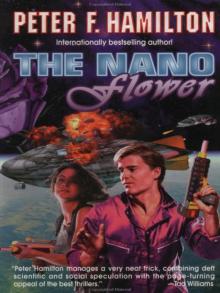 The Nano Flower
The Nano Flower The Confederation Handbook
The Confederation Handbook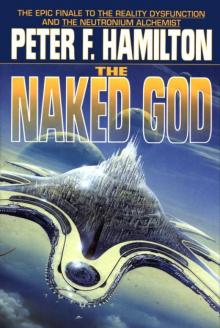 The Naked God
The Naked God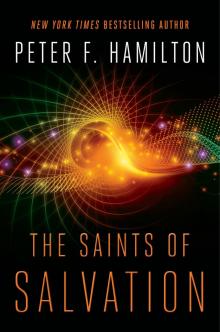 The Saints of Salvation
The Saints of Salvation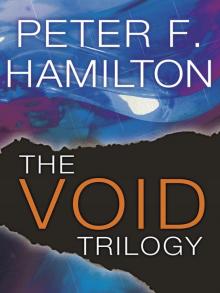 The Void Trilogy 3-Book Bundle
The Void Trilogy 3-Book Bundle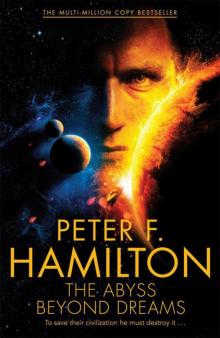 The Abyss Beyond Dreams
The Abyss Beyond Dreams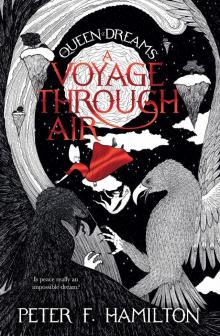 A Voyage Through Air
A Voyage Through Air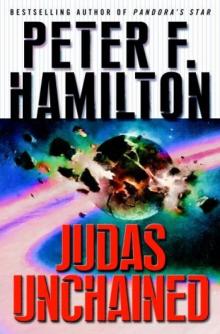 Judas Unchained
Judas Unchained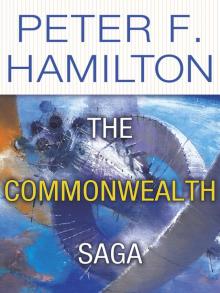 The Commonwealth Saga 2-Book Bundle
The Commonwealth Saga 2-Book Bundle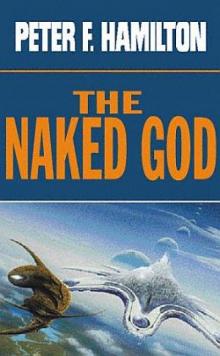 The Naked God - Flight nd-5
The Naked God - Flight nd-5 Night Without Stars (Chronicle of the Fallers Book 2)
Night Without Stars (Chronicle of the Fallers Book 2)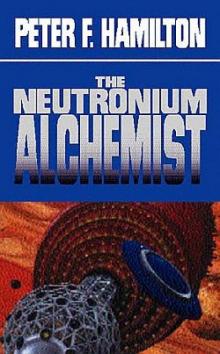 Neutronium Alchemist - Conflict nd-4
Neutronium Alchemist - Conflict nd-4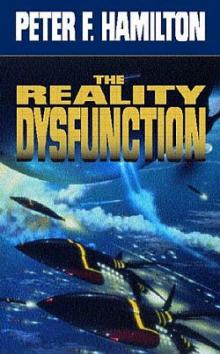 Reality Dysfunction - Expansion nd-2
Reality Dysfunction - Expansion nd-2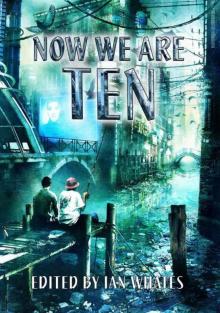 Now We Are Ten: Celebrating the First Ten Years of NewCon Press
Now We Are Ten: Celebrating the First Ten Years of NewCon Press Neutronium Alchemist - Consolidation nd-3
Neutronium Alchemist - Consolidation nd-3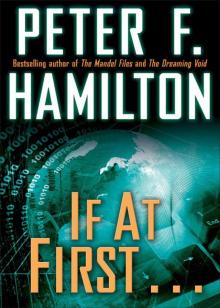 If at First . . . (Short Story)
If at First . . . (Short Story) A Second Chance at Eden nd-7
A Second Chance at Eden nd-7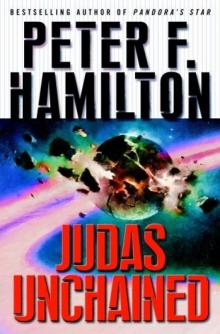 Judas Unchained cs-2
Judas Unchained cs-2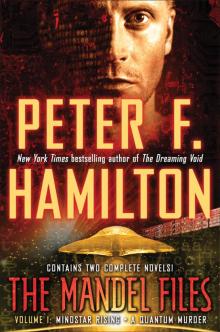 The Mandel Files, Volume 1
The Mandel Files, Volume 1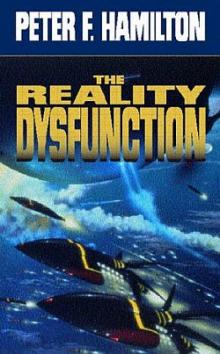 Reality Dysfunction — Emergence nd-1
Reality Dysfunction — Emergence nd-1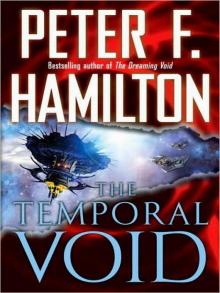 The Temporal Void (ARC)
The Temporal Void (ARC)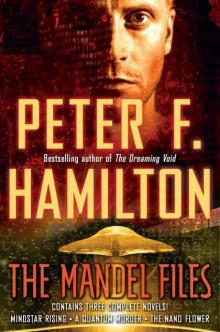 The Mandel Files
The Mandel Files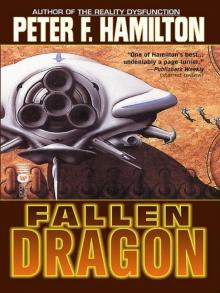 Fallen Fragon
Fallen Fragon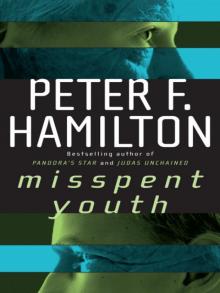 Misspent Youth (commonwealth saga)
Misspent Youth (commonwealth saga)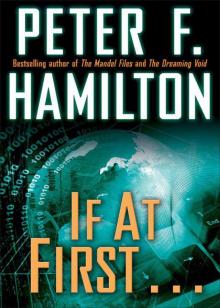 If at First...
If at First... Best of British Science Fiction 2016
Best of British Science Fiction 2016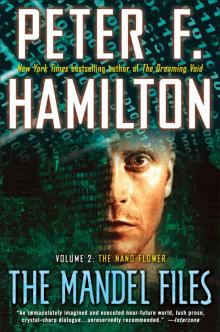 The Mandel Files, Volume 2
The Mandel Files, Volume 2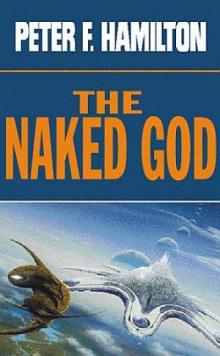 The Naked God - Faith nd-6
The Naked God - Faith nd-6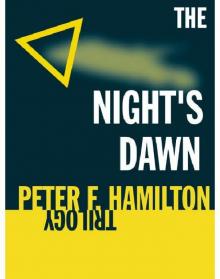 The Night's Dawn Trilogy
The Night's Dawn Trilogy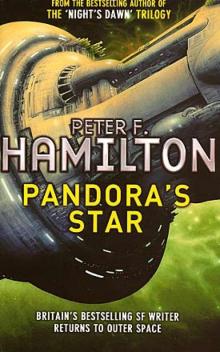 Pandora's Star cs-2
Pandora's Star cs-2 A Window into Time (Novella)
A Window into Time (Novella)